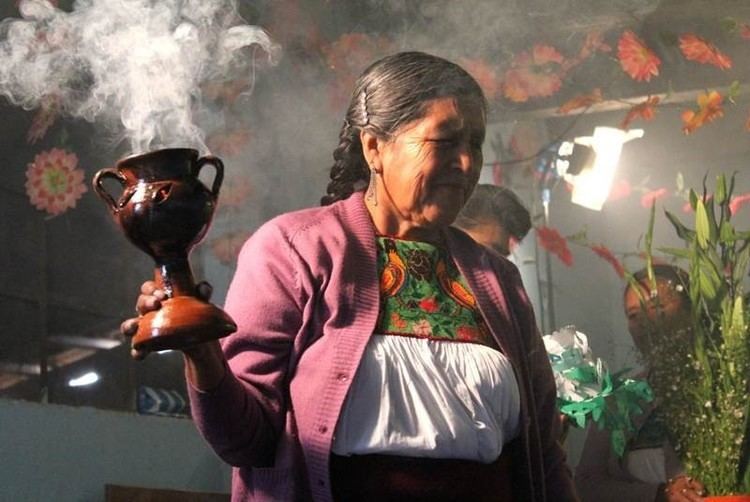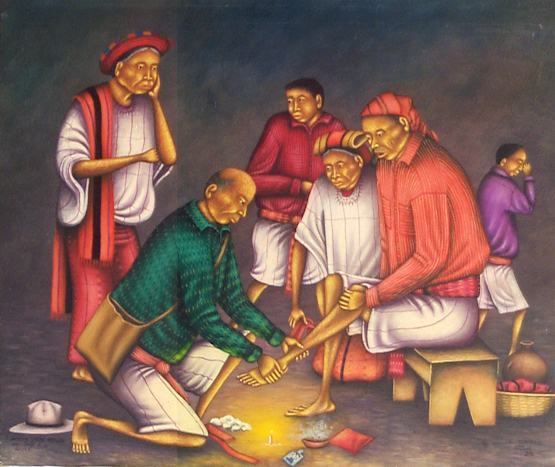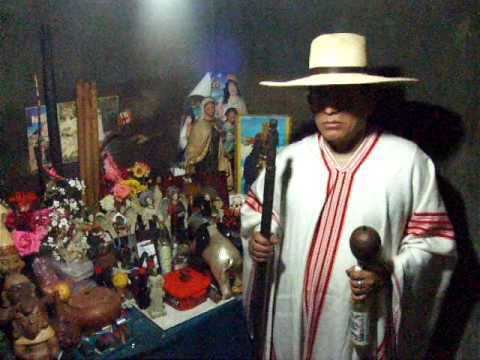 | ||
Limpia with curandero and medium alberto salinas
A curandero ([kuɾanˈdeɾo], f. curandera) or curandeiro ([kuɾɐ̃ˈdejɾu], f. curandeira) is a traditional Native healer, shaman or Witch doctor found in the United States and Latin America. The curandero dedicates their life to the administration of remedies for mental, emotional, physical and spiritual illnesses based on their evaluation. The role of a curandero or curandera can also incorporate the roles of psychiatrist along with that of doctor and healer. Some curanderos, such as Don Pedrito, the Healer of Los Olmos, make use of simple herbs, waters, and even mud to effect their cures. Others additionally employ Catholic elements, such as holy water and saint pictures. The use of Roman Catholic prayers and other borrowings and lendings are often found alongside native religious elements. Many curanderos emphasize their native spirituality in healing while being practicing Roman Catholics.
Contents
- Limpia with curandero and medium alberto salinas
- Curandera and curandero
- History in the United States
- Types
- Further information
- In fiction
- References

They are often respected members of the community. Literally translated as "healer" from Spanish. Their powers are considered supernatural, as it is commonly believed that many illnesses are caused by lost malevolent spirits, a lesson from God, or curse.

Curandera and curandero
History in the United States
Historically, in the United States, curanderos were only found in concentrated Amerindian populations. In the mid– to late–1970s the rise in ethnic minority and immigrant populations grew in tandem with the public presence of curanderos in areas outside of the historical geographic regions of the United States which had large Indigenous populations. Since the 1990s, it is more commonplace to see Curanderos in 'northern'-tier cities in the United States.
Types
There are many different types of curanderos. "Yerberos" are primarily herbalists. "Hueseros" are bone/muscle therapists who emphasize physical ailments. "Parteras" are midwives. "Oracionistas" work primarily through the power of prayer.
Among these broader terms there are several sub specialties. For instance, Yerberos who work primarily with tobacco to heal patients are known as tabaqueros. Healers who work primarily with ayahuasca are known as ayahuasqueros. Healers who work with peyote are known as peyoteros.
Although many curanderos do have a specialty and may identify with it, that does not mean that these healing modalities are necessarily strict and do not overlap. As an example, an oracionista may also be a powerful yerbera and so on.
Further information
The Moche people of ancient Peru often depicted curanderos in their art.
In the Andes, one of the instruments of the curandero is the chonta, a lance carved from the chonta palm, Bactris gasipaes, thought to be imbued with magical powers. The palm grows only in the Amazon basin, and is the object of a brisk commerce. The Jivaro people of the Amazon Rainforest use the hardwood of the chonta to carve their spears. The shaman is also known as chonteador, and his most important wand is the "chonta defensa"; if he dies without disciples, the chonta is thrown, wrapped in rubands and weighted with stones, to the bottom of an andine lake; its power will reemerge when a new shaman will take office. The shamans also use wands of huatulco wood, Loxopterygium huasango.
In fiction
Curanderos, probably because of the mystery and intrigue that surrounds them, are frequently included in fictional works:
